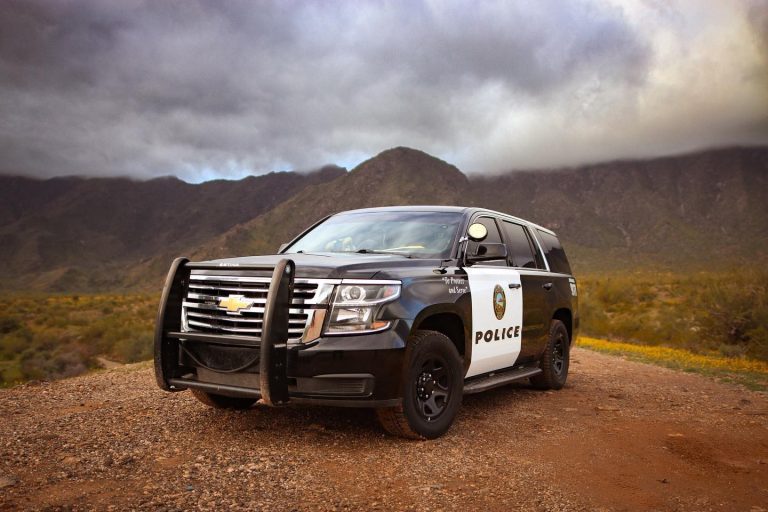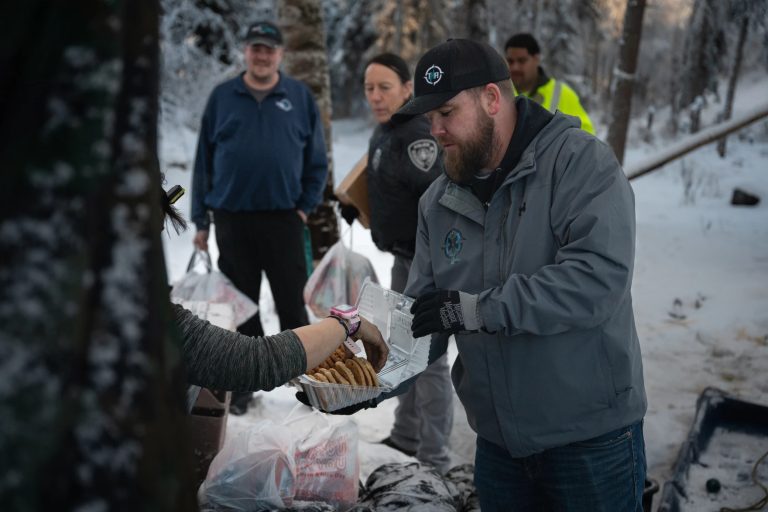by Christine Trudeau
Just weeks before the midterm election in North Dakota last November, voting rights advocates and tribes faced what seemed like an insurmountable task: to reach thousands of tribal members and others who could be turned away at the polls because of a new voter I.D. law. Tribal leaders, organizations, and volunteers came together to bring Native voters in compliance with the law, and in the process sparked one the largest Native vote turnouts ever in the state for a midterm election.

Darlene Chasing Elk greets visitors inside the Yellow House where organizers and volunteers gathered to reach Standing Rock Sioux Nation voters (Photo: Christine Trudeau)
The headquarters for the get-out-the-vote effort near Fort Yates on the Standing Rock Sioux Reservation became known as the Yellow House. It was here that many voters on the reservation got help on updating their I.D.s with a permanent physical addresses and filling out absentee ballots. After it became clear legal challenges were not going to stop North Dakota’s new voting requirements from taking effect, organizers utilized the Yellow House to reach the voters who could potentially be turned away. Standing Rock member Darlene Chasing Elk was born and raised here. Months later, she walks around the Yellow House remembering it filled with organizers and volunteers.
“We were here for like two weeks, and it was really awesome,” Chasing Elk said. “We have a lot of people that came in and helped volunteer to go door to door, do the voting.”
Voting rights organizations like Four Directions, Lakota People’s Law Project, and North Dakota Native Vote worked with Standing Rock and other tribes to reach thousands of tribal members in the critical days before the election.
Nicole Donaghy, field director with North Dakota Native Vote, was another organizer who spent time at the Yellow House helping to inform tribal members about how to comply with the new law and what their rights are if elections officials turned them away on election day.
“I had a team of people that wanted to volunteer down there and so I rented an SUV that can hold up to like six to eight people,” Donaghy said. “We took these SUV’s down and we joined the caravan. We met at the Yellow House and joined all of the other canvassers down in Standing Rock and they went from community to community picking up people to vote.”
On election day, Donaghy took her operation to the courthouse.
“We put up this big tarp and we stayed outside and we had like heaters in there,” Donoghy said. “As people were coming out after they voted we gave them an ‘I’m Indigenous and I vote’ sticker or button and we stayed outside and we prayed. We made sure that people knew where they were going. It was an amazing day.”
Later on election day came the ‘blitz’ as Donaghy calls it. Volunteers took continuous rounds of buses in and out of districts offering rides to the polls. The worked well into the evening answering questions and helping those who may have needed a provisional ballot.
“All of the care that we put into this in such a short amount of time…it was very emotional,” Donaghy said. “I still kind of get teary-eyed thinking about it. But it was a triumph, you know. They didn’t want us to vote. They thought they were going to stop us. You know you don’t tell us that we can’t do anything. Especially you know I’m Lakota. You don’t tell me I can’t do something. We’ll go and do it. We’ll find a way. And that’s the resiliency of Native people.”
With all of the precincts reporting by the end of the night, Donaghy says they’d reached over 10,000 voters across four reservations in the state—Standing Rock, Turtle Mountain, Spirit Lake, and the Mandan Hidatsa and Arikara Nations. Still, the new voter I.D. law stands despite current legal challenges mounted by Native American Rights Fund on behalf of tribes and tribal members who say they are disenfranchised. Organizers say they are maintaining a close watch on those cases and the legislature leading up to the 2020’s election.
(Photo: the ‘Yellow House’ served as headquarters for voting outreach efforts on the Standing Rock Sioux Reservation in the weeks before the 2018 midterm election, by Christine Trudeau)
This story is a joint project with National Native News, Prairie Public Broadcasting and Solutions Journalism Network looking into how a potential setback for tribal members in North Dakota turned into a win for tribes, voters and Native candidates.



